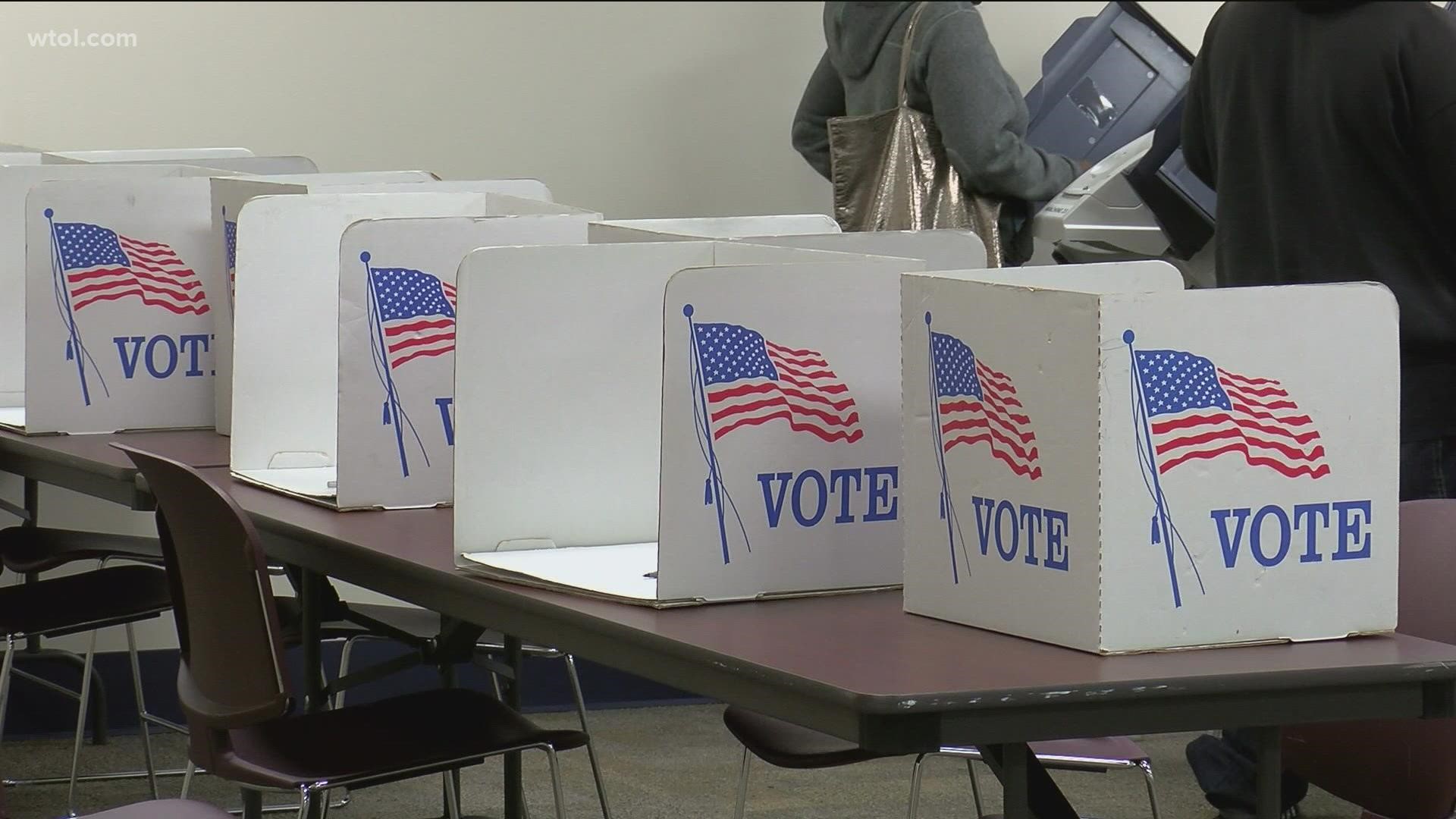TOLEDO, Ohio — Primary election day for voters in both Ohio and Michigan is coming up Tuesday, May 2.
While the ballot for this year's primary election may seem much smaller than usual for many voters, several local municipalities and school districts have levies and other issues to decide.
WHEN IS ELECTION DAY?
Tuesday, May 2, 2023.
WHERE IS MY POLLING PLACE?
You can find your polling location in Ohio HERE.
You can find your polling location in Michigan HERE.
WHEN ARE THE POLLS OPEN?
Polls are open throughout Ohio from 6:30 a.m. until 7:30 p.m. Remember, you are still permitted to vote as long as you're in line before the polls close at 7:30 p.m.
Polls in most of Michigan, including the southeastern region, are open from 7 a.m. to 8 p.m. eastern daylight time.
WHAT RACES ARE ON MY BALLOT?
CLICK HERE to see a sample of your local ballot in Ohio so you can study up before heading to the polls.
CLICK HERE to see a sample local ballot in Michigan.
In Lucas County, voters in Maumee will decide the fate of a levy to support the city's fire department.
Maumee voters will vote on a proposed 5.6-mill property tax levy to fund the city's fire and EMS departments. The levy would generate about $3 million a year and cost a property owner about $196 per $100,000 in home value.
In Jerusalem Township, there is a ballot measure to allow liquor sales on Sundays at Cooley Canal Yacht Club, which is in Curtice.
New voter ID rules for Ohio
In Ohio, there are new regulations for voter ID this year.
Some form of photo identification will be required to cast a ballot in person, whether you're voting early or on Election Day. This is a change from previous law, which had allowed Ohioans a variety of nonphoto options to prove their identity, including a utility bill, bank statement, government check or paycheck listing their current address.
Acceptable forms of photo ID are:
—A state of Ohio driver's license or state ID card, listing either your current or previous address, as long as it's not expired; licenses from other states will not be accepted.
—A military ID card, including either a U.S. military ID card, an Ohio National Guard ID card or a U.S. Department of Veterans Affairs ID card; veteran ID cards issued by county recorders will not be accepted, and military ID will no longer be accepted when registering to vote.
—A U.S. passport or passport card, which is a new option this year
An exemption is provided under the law for those with religious objections to photography. You'll be required to provide your birth date and the last four digits of your social security number on a special form.
The number from your Ohio driver's license or state ID card, or the last four of your SSN, can be used as proof of identity when voting by mail.
The law also adds a new requirement that Ohio driver's licenses and state ID cards indicate an individual's citizenship status. That's after Ohio voters last year banned noncitizen voting at the local level.
More on WTOL:

